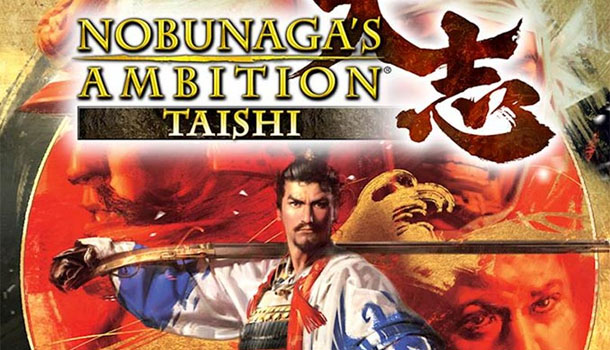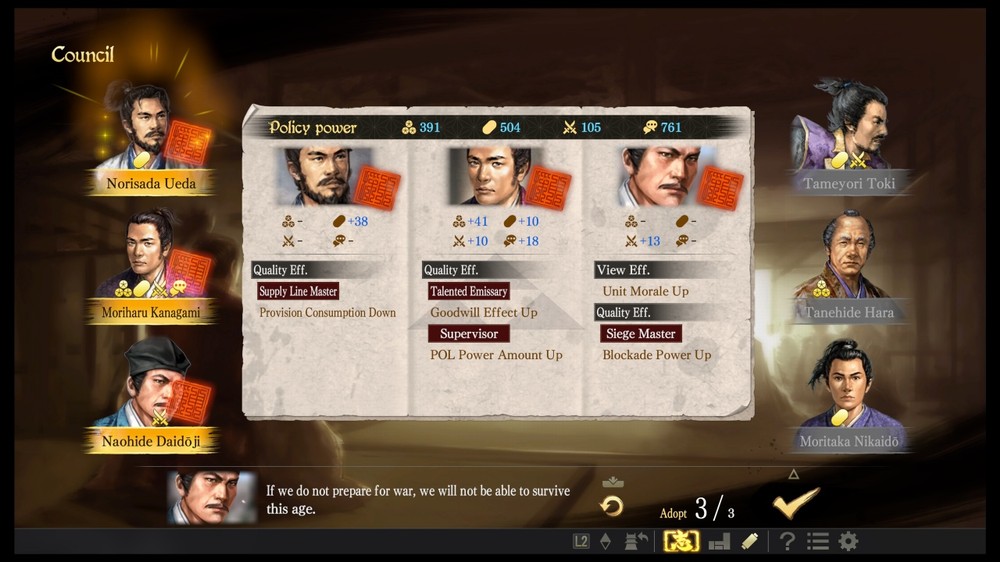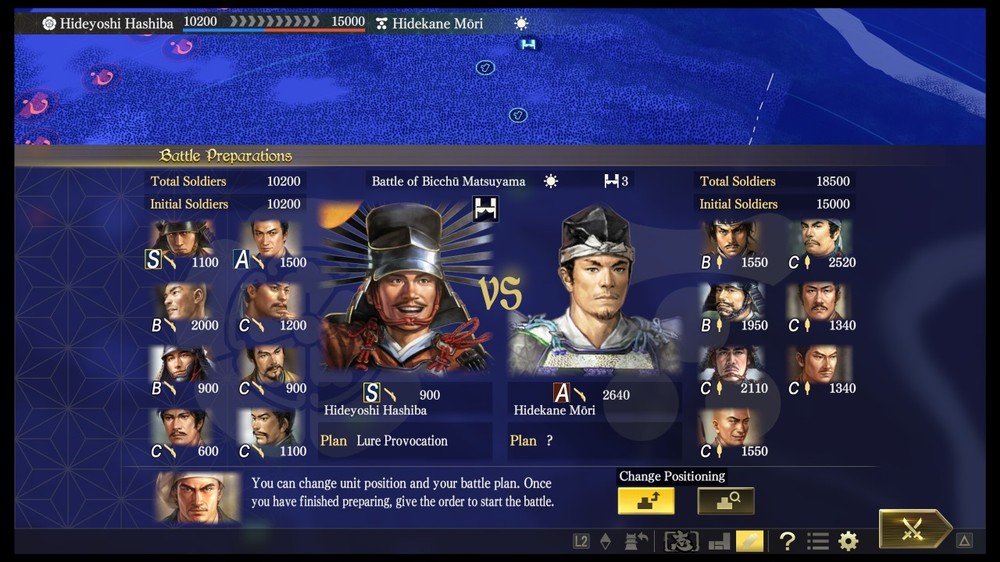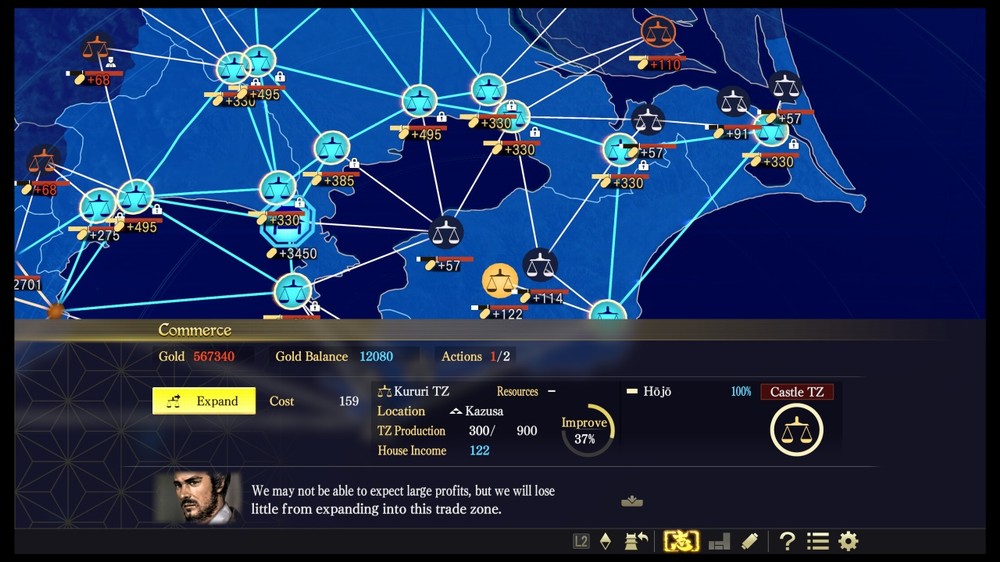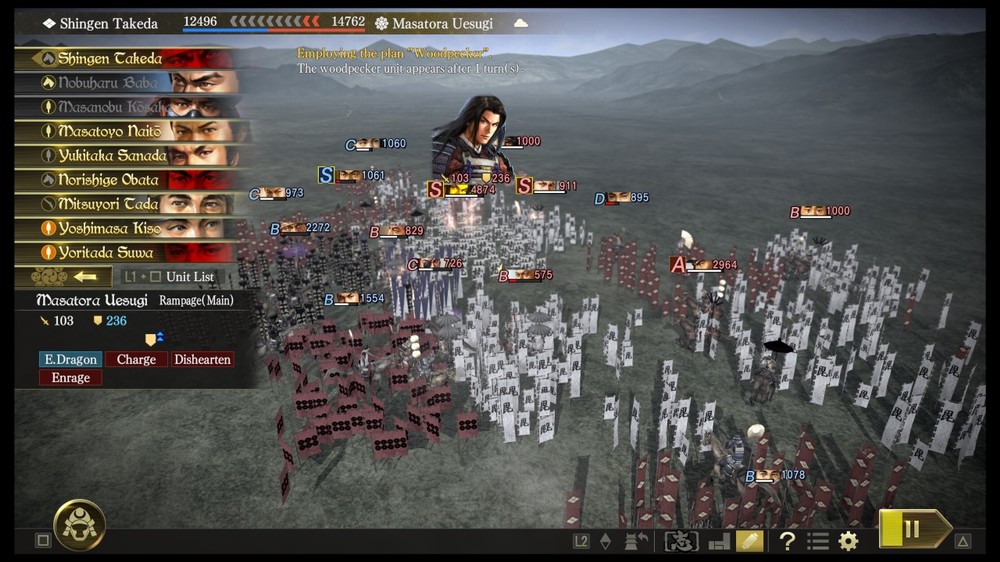Though similar games such as city builders are starting to become more prevalent on consoles, it’s still quite rare to see tactical or strategic titles make their way to our living room TVs. For the Nobunaga’s Ambition series, however, console releases have been happening since the 1980s, with Taishi being the 15th game in the series, with the first title releasing way back in 1983. The Nobunaga’s Ambition series focuses on various periods in Japanese history, and by mixing strategic development, politics and battles, attempts to create an experience that allows you to feel what it was like to rule your own region of Feudal Japan.
There are six different scenarios to choose from within Taishi, all taking place in the period between 1545 and 1582. Within each scenario, you’re given the choice of taking control of about 90 different clans, each with their own pocket of land on the map, and each with their own set of aims and challenges to overcome. Some are focused on war and conquest, some wish to unify Japan through any means possible, and some are focused on creating the best life possible for their citizens. By taking the advice of a variety of different counselors, and managing income, resources and military forces, you’re expected to build up your clan and make them prosperous.
Gameplay is broken down into months, where you’re able to select the areas that you wish to expand, through trade and agriculture to hiring mercenaries and expanding your landholdings. Some months give you more to do than others, as, for example, you plan what to do with your farmland during different seasons, but for the most part it’s a steady stream of council meetings and policy decisions, interspersed with occasional combat if that’s how you or your neighbors decide to proceed.
You’ll find quite early on that it’s helpful to enter Nobunaga’s Ambition with at least a basic understanding of Japanese history from the period, or at least some understanding of Japanese historical culture. I don’t really possess either, and I found that the number of names, terms and information that was being thrown at me from the very beginning was quite overwhelming, and the lack of any real visual feedback made it difficult to tell what exactly I was doing and why, and what the eventual outcome was supposed to be. With a few more hours under my belt, I was eventually able to gauge most of what was happening and what I was expected to do to proceed, but I would advise newcomers that there’s a pretty steep learning curve that may even be steep enough to turn you off entirely.
The presentation of the game doesn’t help to encourage players, either. There are occasional cutscenes, but these tended to remind me of B-movies from the 1950s that you’d see on TV on a Sunday afternoon, with dialogue, both in terms of script and delivery, and music all feeling dated and overblown. In-game, there are a whole bunch of maps and menu screens to look at, but nothing that really stands out and grabs your attention. This is definitely a game that I found quite difficult to focus on, and I often found my mind wandering, or wishing that I was doing something more exciting. Bureaucracy has its merits, but when it comes to videogames, I don’t want to feel like I’m doing at home what I’ve already been doing all day in the office.
Though Nobunaga’s Ambition: Taishi works well, and I didn’t run into any major issues, my main struggle with the game was just that I found it increasingly dull. This may be in part due to the fact that I went in without any contextual knowledge, and so the idea of playing around in historical Japan didn’t especially excite me, but it was also because the game itself never really asks you to do anything interesting. There are a lot of maps, figures and opinions to look at, but not enough visual feedback to make any of your decisions feel consequential.
If you are looking for the kind of nation-management sim that Nobunaga’s Ambition offers, then this is one of your better options on console, but this is mainly because of the dearth of other titles rather than the quality of this one in particular. It’s not a bad game technically, but it’s also not particularly fun or exciting, and I spent most of my time with it thinking of how I could be better spending my day.

